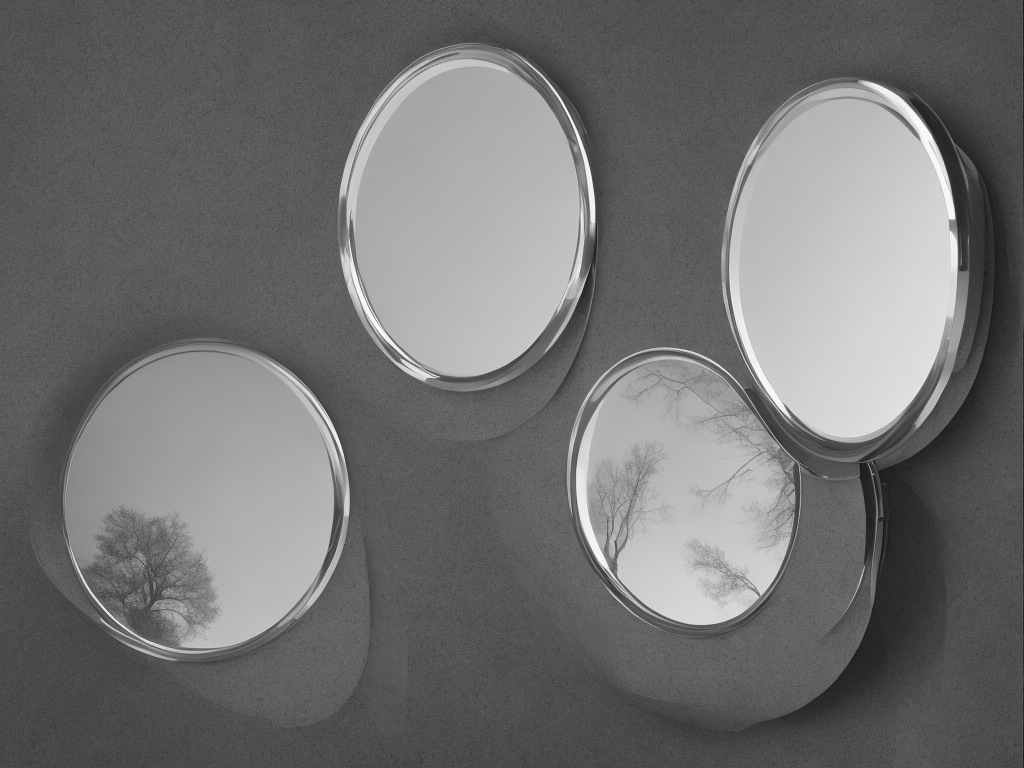
When it comes to mirrors, we all know that they reflect our image. But did you know that they can be classified as either concave or convex? These two types of mirrors have very different properties that affect the way they reflect light and therefore the way they can be used in practice. In this article, we will explore the difference between concave and convex mirrors.
What is a Concave Mirror?
A concave mirror is a mirror with a reflecting surface that curves inward like the inside of a spoon. It is also known as a converging mirror since it focuses incoming light rays towards a central point called the focal point. Because of its unique shape, a concave mirror can produce real and virtual images, depending on the position of the object relative to the mirror.
Real images are formed when the light rays coming from a single point on the object interact with the mirror and converge at a point on the same side of the mirror as the object. These images are inverted and can be projected onto a screen. Examples of real images you might be familiar with include those produced by a movie projector or a camera.
Virtual images, on the other hand, are formed when the light rays coming from an object appear to converge at a point behind the mirror. These images are not inverted and cannot be projected onto a screen. Examples of virtual images include those produced by a magnifying glass or a rearview mirror.
What is a Convex Mirror?
A convex mirror is a mirror with a reflecting surface that curves outward like the outside of a spoon. It is also known as a diverging mirror since it diverges incoming light rays away from a central point. A convex mirror always produces virtual images, regardless of the position of the object relative to the mirror.
The images produced by a convex mirror are smaller and upright compared to the original object. This is because the diverging light rays spread out and do not converge. Convex mirrors are commonly used in places where a wide field of view is needed, such as in security cameras, side-view mirrors on cars, and mirrors in supermarkets.
What are the Differences Between Concave and Convex Mirrors?
1. Shape: The most obvious difference between the two mirrors is their shape. Concave mirrors are curved inward, while convex mirrors are curved outward. This difference in shape affects how the mirrors reflect light.
2. Focal point: Concave mirrors have a focal point where the light rays converge. Convex mirrors have a virtual focal point where the light rays appear to originate from.
3. Image formation: The image formed by a concave mirror can be either real or virtual, depending on the position of the object relative to the mirror. The image formed by a convex mirror is always virtual and smaller than the original object.
4. Magnification: Concave mirrors can produce magnified or diminished images, depending on the distance between the object and the mirror. Convex mirrors always produce diminished images.
5. Field of view: Concave mirrors have a narrow field of view compared to convex mirrors, which have a wider field of view. This makes convex mirrors more useful in situations where a wider field of view is required, such as in security or driving mirrors.
6. Uses: Concave mirrors are commonly used in telescopes, microscopes, and cameras. Convex mirrors are commonly used in security cameras, side-view mirrors on cars, and mirrors in supermarkets.
Conclusion
In essence, concave and convex mirrors have very different properties due to their shape and curvature. Concave mirrors can produce both real and virtual images, depending on the position of the object relative to the mirror. They can also produce magnified or diminished images. Convex mirrors, on the other hand, always produce virtual images that are smaller than the original object. They have a wider field of view, making them more useful in situations where a wider field of view is required. Overall, the difference between concave and convex mirrors is an important factor to consider when selecting a mirror for a specific application.
 Self-Instruct
Self-Instruct